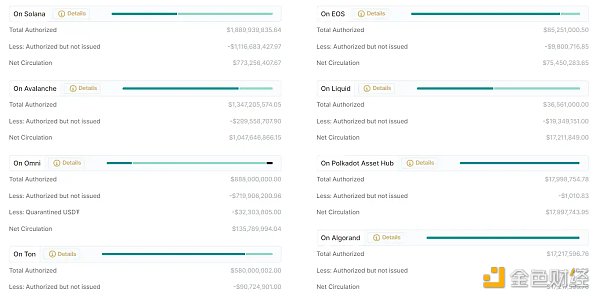Author: Zhang joy Source: blocktempo
Tether, the leading USDT issuer of stablecoins, announced on the 24th that it will undergo a strategic transformation and give priority to issuing USDT on community-driven blockchains:
At Tether, we are firmly committed to maintaining a strong and innovative blockchain ecosystem for USDT and all other tokens we issue. To fulfill this commitment, we will continue to evaluate the current transmission layer and strive to strike a balance between maintainability, usability, and community interests.
Tether stops issuing USDT on EOS and Algorand
At the same time, Tether announced in the announcement that after comprehensive consideration, they will suspend the issuance of USDT on the public chains EOS and Algorand, and continue to support protocols or public chains that the community considers useful:
Starting today (June 24, 2024), Tether will stop minting USDT on EOS and Algorand.
In the next 12 months, Tether will exchange USDT on EOS and Algorand as usual. If there are other changes, we will announce them in a timely manner after evaluation.
Why were EOS and Algorand abandoned by Tether?
According to Tether’s official website, the blockchains on which Tether currently issues USDT include Tron, Ethereum, Solana, Ton, Avalanche, Near, and many other public chains.
· Tron has the largest issuance, with a total issuance of more than 59.8 billion US dollars
· Ethereum, the second largest cryptocurrency, also has an issuance of nearly 52 billion US dollars
· Solana, a popular public chain that has been revived, has an issuance of about 1.89 billion US dollars
· Even TON, which only received support from Tether this year, currently has an issuance of 580 million US dollars
On the other hand, EOS and Algorand, as old public chains, have issuances of only 85.2 million US dollars and 17.2 million US dollars respectively. It seems that they are indeed not attractive enough to users, which may be one of the reasons why they were abandoned by Tether.

On the other hand, some people in the currency circle speculate that according to the wording of Tether in the announcement, "We will carefully evaluate the security architecture of the network to ensure the security, availability and sustainability of the selected blockchain. Our goal is to allocate resources to where we can maximize security and efficiency." Tether's move may also imply that the degree of decentralization of EOS and Algorand is not high enough, which may cause Tether to face potential regulatory risks in the future.
However, this speculation has not been confirmed by Tether, and it is highly likely that they will not explain it in the future. However, whether Tether will continue to cancel support for more public chains or add other public chains, we can continue to observe.
 JinseFinance
JinseFinance





